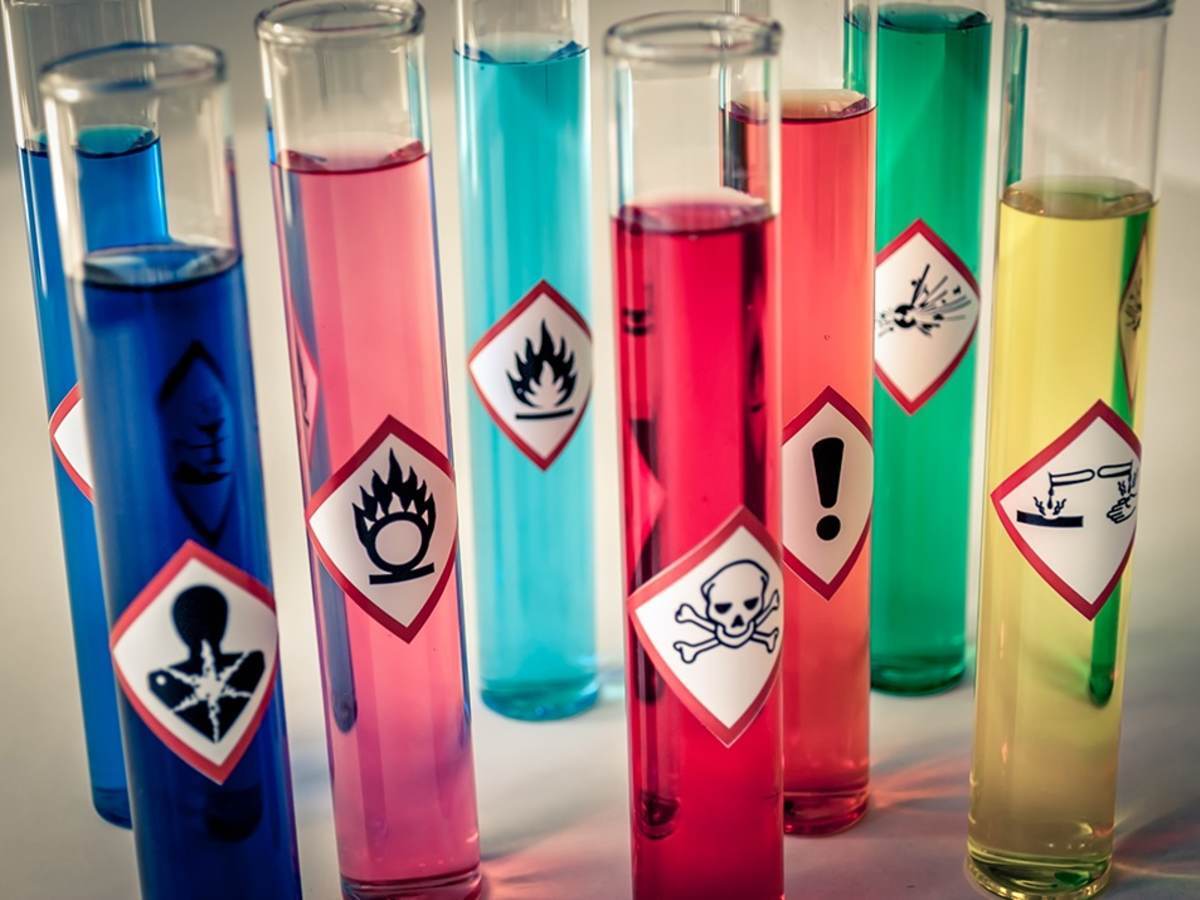October 22, 2024
By Susana Planas MunGavin BSc., MSc, senior regulatory specialist, Supply Chain team, UL Solutions
On October 7, 2024, the UK Health and Safety Executive (HSE) opened three separate public consultations on the grounds of Article 37A (GB mandatory classification and labelling of substances) proposals. These are:
- GB CLP 006 concerning substances: N-Carboxymethyliminobis (ethylenenitrilo)tetra(acetic acid) (DTPA) and its pentasodium and pentapotassium salts, identified with CAS numbers 67-43-6; 7216-95-7; 140-01-2
- GB CLP 007 concerning substance: 2-Butoxyethanol (EGBE), CAS 111-76-2
- GB CLP 008 concerning substance: Silanamine, CAS 68909-20-6
Stakeholders are invited to submit comments on the HSE proposed GB mandatory classification and labelling during the 60-day period of the consultation, until it closes on December 6, 2024, at 23:59 London time (BST). After this deadline, any input to the consultation will not be considered by the HSE, acting as the GB CLP Agency. All comments may be submitted following the online survey link provided in each of the consultation online pages provided in the reference section below.
The classification, labelling and packaging of chemicals placed on the market in Great Britain (England, Scotland and Wales) is regulated by the ‘Retained CLP Regulation (EU) No. 1272/2008 as amended for Great Britain’, known as GB CLP.
The Fifth Edition of the Great Britain Mandatory Classification List (GB MCL) based on the 14th and 15th Adaptations to Technical Progress (ATP) of the EU Classification, Labelling and Packaging Regulation (EU) No. 1272/2008(EU CLP) is the currently enforced list. The latest update concerned the classification and labelling update of eighty-eight chemical substances, which were approved under the Ministerial Decision of June 2024 published by the HSE.
The following is a summary introduction to the HSE public consultations reports:
- GB CLP 006 report on N-Carboxymethyliminobis (ethylenenitrilo)tetra(acetic acid) (DTPA) and its pentasodium and pentapotassium salts, justifies the consultation on the basis that the EU Committee for Risk Assessment (RAC), concluded that DTPA-H5, DTPA-K5 and DTPA Na-5 meet the classification criteria for Repr. 1B (H360D). DTPA is a chelating compound used by industry to bind metals.
These substances are widely used in the pulp and paper industry, and used as detergent, cleaner, soap, textile and other uses for plaster production and scale removers. The multiple studies described in the report lead to the RAC confirming the proposal to classify these three salts as Repr. 1B; H360D, with a Specific Concentration Limit (SCL) of 3% based on available studies. The GB CLP Agency concludes that the three substances meet the criteria for this re-classification, currently not included in the GB MCL list.
- GB CLP 007 report on 2-Butoxyethanol, referred to as EGBE, identifies the classification and labelling made by RAC in the EU since 2018, as Acute Tox. 3, H331; Acute Tox. 4, H302; Skin Irrit. 1, H315; Eye Irrit. 2, H319 and not classified for acute dermal toxicity (ECHA, 2018). Later, the classification of EGBE was updated under Annex VI of the EU CLP, 15th ATP revision, to exclude the acute inhalation toxicity hazard. This was the revised classification that was copied over in the GB MCL list following the exit from the EU. However, following new information and evidence, RAC concluded that a classification of Acute Tox 3; H331 (Toxic if inhaled) was warranted, and subsequently included in Annex VI of EU CLP, 18th ATP. This update has not been included into the current GB MCL List, as the revised classification was agreed after the UK left the EU. The current GB MCL list entry for EGBE contains a minimum classification for acute toxicity inhalation (i.e., Acute Tox. 4*, H332) and for this reason, the CLP Agency has prepared the MCL report for consultation to assess whether the GB MCL list entry needs updating or not.
EGBE (Ethylene glycol monobutyl ether) is part of glycol ethers used as solvents by industry, to produce paints and surface coatings, detergents and surface cleaners, dyes and inks. Additional common uses include as intermediate for EGBE acetate synthesis and as a cleaning agent, and other minor uses in the textile manufacture, and in the paper and rubber/oil industries.
A number of animal and human studies were considered for the assessment of the acute inhalation toxicity of EGBE. The GB CLP Agency concluded that EGBE did meet the criteria for being classified as Acute Tox. 331 (Toxic in Inhaled), with the default ATE of 3.0 mg/L/4h (vapour).
- GB CLP 008 report on Silanamine, justifies the need of a revised classification following the CLP Agency Opinion (HSE, 2022) stating:
“In the case of Silanamine, HSE, as the GB CLP Agency, is aware of additional information that may alter the classification of Silanamine. This meets the criteria for triggering Article 37A and therefore the acute inhalation toxicity classification requires further assessment under the Article 37A process of the GB CLP Regulation.”
Silanamine or alternatively, pyrogenic, synthetic amorphous, nano, surface treated Silicon dioxide, its ISO common name, is an approved active substance for industrial use in biocides product-type 18 (Insecticides, Acaricides and Products to Control Other Arthropods). Its main biocidal uses include fowl-infesting control by professional operators.
Several studies revealed by industry address the potential acute inhalation toxicity of Silanamine, following evidence of suffocation and obstruction of the nasal cavities in animals (Anonymous 2022; Krueger et al. 2022). These and other tests (Anonymous 2000, 1996c), as reported in the consultation document, concluded lung failure due to obstruction of airways along with some lung inflammation in animals. Despite the findings, it was concluded that nasal obstructions that were observed in rodents, would not be the case in humans, but rather obstruction of the upper and lower airways, as humans do not have the same breathing patterns and respiratory structures as rodents, humans having effectively larger airway capacity, making lungs more resistant to overload of deposited material, plus having the capacity to remove material deposited in the larynx by coughing. Industry also raised the point that the CLP Regulation classification of the substance, should take into account the physical state of the substance being placed on the market and/or used, density, hydrophobicity and particle size, for example, and that commercially available forms of the substance in question was mainly made in the form of larger, non-respirable agglomerates. The CLP Agency therefore concluded that it is likely that suffocation is the main cause leading to death, which results directly from the physical property of the substance and therefore there was not sufficient data to warrant further classification as acute inhalation hazard substance.
The HSE, as the GB CLP Agency of the UK, under the legal framework of Article 37 of the GB CLP Regulation, has opened the public consultations concerning the classification and labelling requirements of these specific substances mentioned above in order to establish whether or not an update is supported, based on the opinions of the RAC and the GB Agency Opinions, or whether their current classifications should be maintained.
MCL proposals will not be updated following the comments submitted during the consultation, however they will be taken into consideration for the Agency technical reports and opinions that are produced later in the process, prior to being accepted as a new or revised classification. Typically, HSE recommends GB MCL changes within 12 months of issuing an Agency Opinion. The entry into force of the recommended changes is effective once the Secretary of State has made the decision with the consent of the Devolved Administrations (Scotland and Wales). All minister’s decisions get published on the HSE website.
Recommended Action Items
- If placing any of the substances concerned under the public consultation, it is recommended to submit relevant comments before December 6, 2024.
- Review the impact on current activity and industrial operations of the proposed classification changes for each of the substances, as applicable.
- Follow-up outcome of the public consultation, Agency technical reports and opinions.
- Implement the updated mandatory classification and labelling for listed substances within the date specified under the GB MCL List.
References
GB CLP 007 – EGBE – Article 37A (GB mandatory classification and labelling of substances) proposal
GB MCL List 5th Edition is available to be downloaded online from
Regulatory Roundup Newsletter
Never miss an update
UL Solutions, the global safety science leader, can keep you updated on the latest events with a variety of materials, ranging from the latest regulatory news, webinars, white papers, events, industry insights and more.
Subscribe to our monthly Regulatory Roundup Newsletter and stay up to date on current and upcoming regulations and all the latest chemical industry news.
Safety Data Sheet (SDS) Authoring and Labeling Software and Services
Create, maintain and distribute comprehensive SDSs and labels to meet your increasingly complex global compliance requirements.
Chemical Regulatory Compliance
Manage your chemical compliance needs with the help of global regulatory expertise and leading resources.
Chemical Compliance Training
We provide a series of chemical regulatory training programs designed to help understand the diverse set of requirements and how to confront them.
Get connected with our sales team
Thanks for your interest in UL's products and services. Let's collect some information so we can connect you with the right person.





